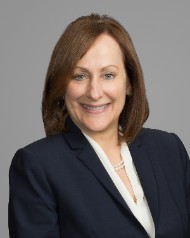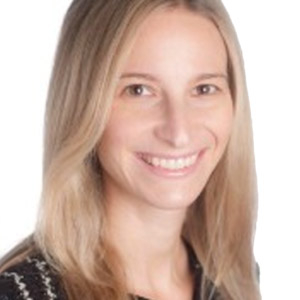Trust your instincts and let them guide you, advises Katten’s Lisa Atlas Genecov. Her instincts lit the way to a path that has allowed her to have a fulfilling career and simultaneously raise a family.

Finding Success Through Forging An Alternate Way
Genecov began her law career in Dallas as a Mergers and Acquisitions attorney, with stints at several large regional and national law firms. After her youngest child, now 26, was born, she decided it was time to downshift for a period, and she began to work three days a week for a smaller firm.
“I didn’t want to miss all those important milestones that my kids would have, but I didn’t want to stop working completely,” she notes, echoing a common theme among many working moms. At the smaller firm, she found herself handling numerous healthcare transactions, along with her general M&A work, and realized how much she enjoyed it. She pivoted to the health care space, and it soon became 100% of the focus of her legal practice.
When Genecov decided to return back to a larger firm and a full-time practice three (3) years later, she maintained that specialty, eventually becoming the firm’s Health Care Practice Group leader. Looking back, she has come to appreciate the fact that transitioning to part-time status led to the most rewarding shift for her career—not only did she have more time with her kids, but it allowed her the opportunity to try something new which propelled her practice into a different and very busy direction, just as health care reform came into focus and the Affordable Care Act was later signed into law, dramatically reshaping the country’s health care landscape.
About eight months after Katten opened its Dallas office in February 2018, Genecov joined the firm as Co-Chair of its National Health Care Practice Group. She came to Katten with two female lateral partners – Cheryl Camin Murray and Kenya Woodruff – both of whom she has respected and known for years but they hadn’t practiced together. They established Katten’s first Health Care practice in Dallas, counseling health care providers in connection with major transactions and regulatory issues while working closely with the firm’s white collar attorneys on health care litigation matters.
“I’m proud that I came together with these other partners to grow our complementary practices,” Genecov says. “It’s exciting to be working at a growing and successful office of a well-respected national law firm and health care practice where I enjoy working with my colleagues every day. And along with that, I’m proud to have been able to maintain a robust and satisfying career while raising two awesome kids who have become two awesome adults.”
Succeeding in the Balancing Act
In fact, Genecov believes that one of the biggest issues for women when choosing a place to work—whether it’s a firm, public service or in-house position—is to make sure you are well supported at your workplace, but also at home if you are planning to raise a family.
It’s important to proactively find mentors and sponsors at the start of and throughout your career, she said. “Look for mentors who are good at helping you in particular aspects of your career. If there’s a job that’s not working, find one that better suits your needs, and don’t be afraid of making a change,” she says, pointing to her own experience as the catalyst for a positive new path. “I wasn’t afraid to take an opportunity if it seemed like the right one.”
Along the way she has appreciated the people who have helped her, and for that reason Genecov says she always tries to be a good mentor to other women lawyers, some of whom are now in the C-suite in-house or in legal departments of large companies, of which she’s very proud.
Diversity has always been a key value for Genecov. In fact, at her prior firm she was chief diversity officer, where she felt she was able to make a positive impact on retention and advancement. She’s also invested in helping ensure the success of the next generation and pleased that Katten recently moved its Dallas office to the Uptown “Park District” area. “We are always looking for ways we can appeal to what younger attorneys value, and our high-tech, flexible office that focuses on green space will help us to successfully do that.”
In addition to her busy practice, Genecov is president of the Executive Committee and a founding member of the Center for Women in Law at the University of Texas, which helps to advance women at all phases of the legal profession. For many years, she has also been an active volunteer and Board Member with the Jewish Federation of Greater Dallas.
Now that her children are adults, she and her husband continue to find meaningful ways to spend time together; often traveling to places, including Europe and Colorado, as well as enjoying sporting events and music closer to home. “I’m so proud of my kids, and the best part is that we really enjoy one another’s company,” she says.



